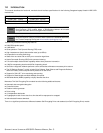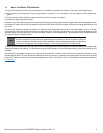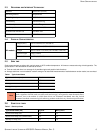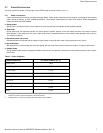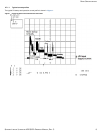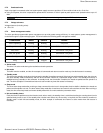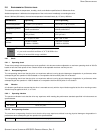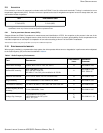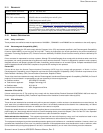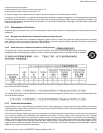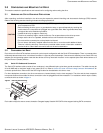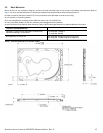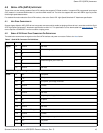
SEAGATE LAPTOP ULTRATHIN HDD SATA PRODUCT MANUAL, REV. C 9
DRIVE SPECIFICATIONS
2.7.2 Conducted noise
Input noise ripple is measured at the host system power supply across an equivalent 15-ohm resistive load on the +5 volt line.
Using 5-volt power, the drive is expected to operate with a maximum of 100 mV peak-to-peak square-wave injected noise at up to 10
MHz.
NOTE
Equivalent resistance is calculated by dividing the nominal voltage by the typical RMS read/write current.
2.7.3 Voltage tolerance
Voltage tolerance (including noise):
+5V ± 5%
2.7.4 Power management modes
The drive provides programmable power management to provide greater energy efficiency. In most systems, power management is
controlled through the system setup program. The drive features the following power-management modes:
Active mode
The drive is in active mode during the read/write and seek operations.
Idle mode
The buffer remains enabled, and the drive accepts all commands and returns to active mode any time disk access is necessary.
Standby mode
The drive enters standby mode when the host sends a standby Immediate command. If the host has set the standby timer, the drive can
also enter standby mode automatically after the drive has been inactive for a specifiable length of time. The standby timer delay is
established using a standby or idle command. In standby mode, the drive buffer is enabled, the heads are parked and the spindle is at
rest. The drive accepts all commands and returns to active mode any time disk access is necessary.
Sleep mode
The drive enters sleep mode after receiving a sleep command from the host. In sleep mode, the drive buffer is disabled, the heads are
parked and the spindle is at rest. The drive leaves sleep mode after it receives a hard reset or soft reset from the host. After receiving a
reset, the drive exits sleep mode and enters standby mode with all current translation parameters intact.
Idle and standby timers
Each time the drive performs an active function (read, write or seek), the standby timer is reinitialized and begins counting down from its
specified delay times to zero. If the standby timer reaches zero before any drive activity is required, the drive makes a transition to
standby mode. In both Idle and standby mode, the drive accepts all commands and returns to active mode when disk access is
necessary.
POWER MODES HEADS SPINDLE BUFFER
Active (operating) Tracking Rotating Full power
Idle, performance Tracking Rotating Self refresh—low power
Idle, active Floating Rotating Self refresh—low power
Idle, low power Parked Rotating Self refresh—low power
Standby Parked Stopped Self refresh—low power
Sleep Parked Stopped Self refresh—low power




